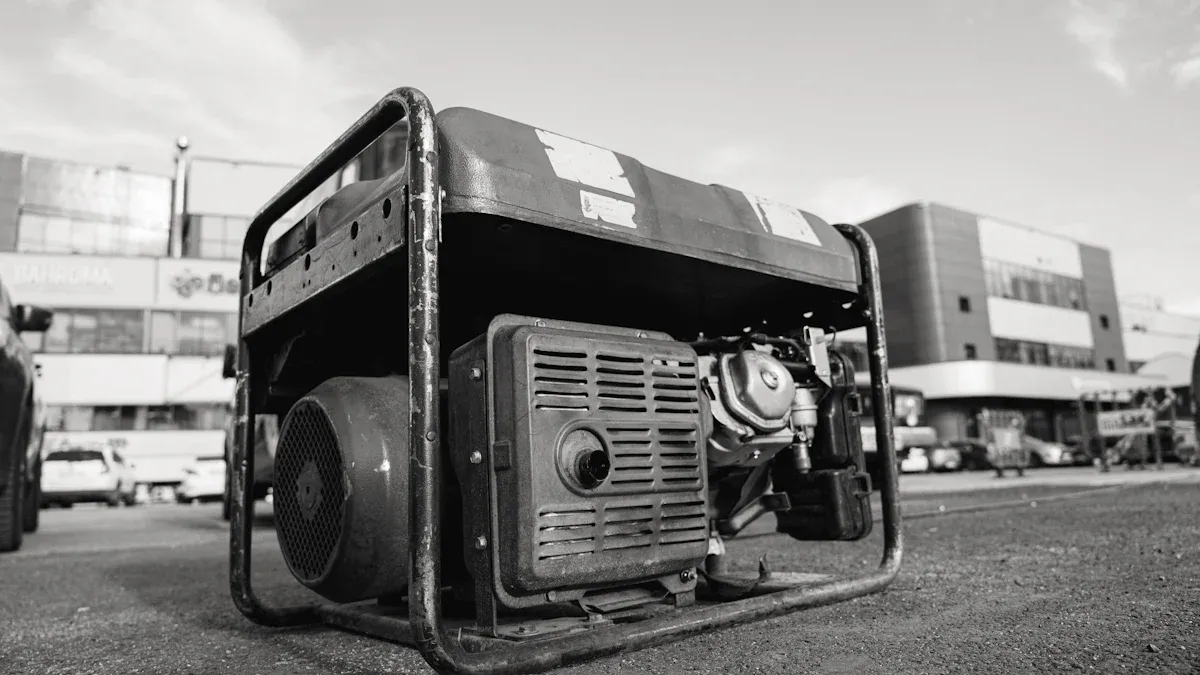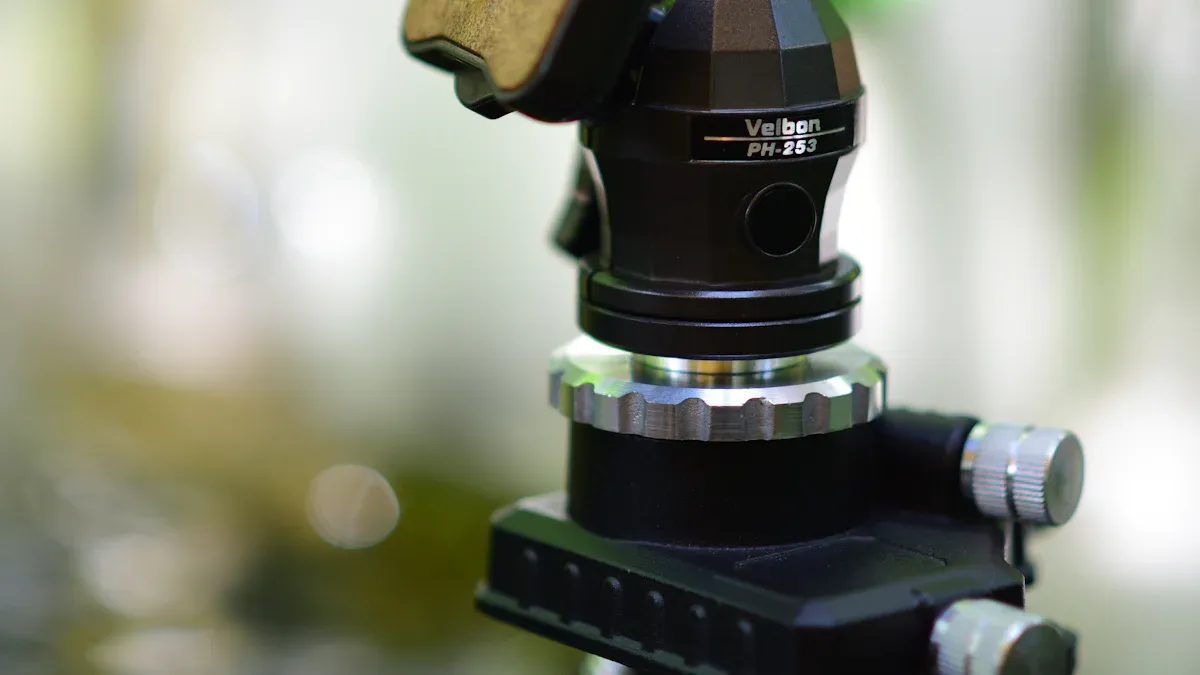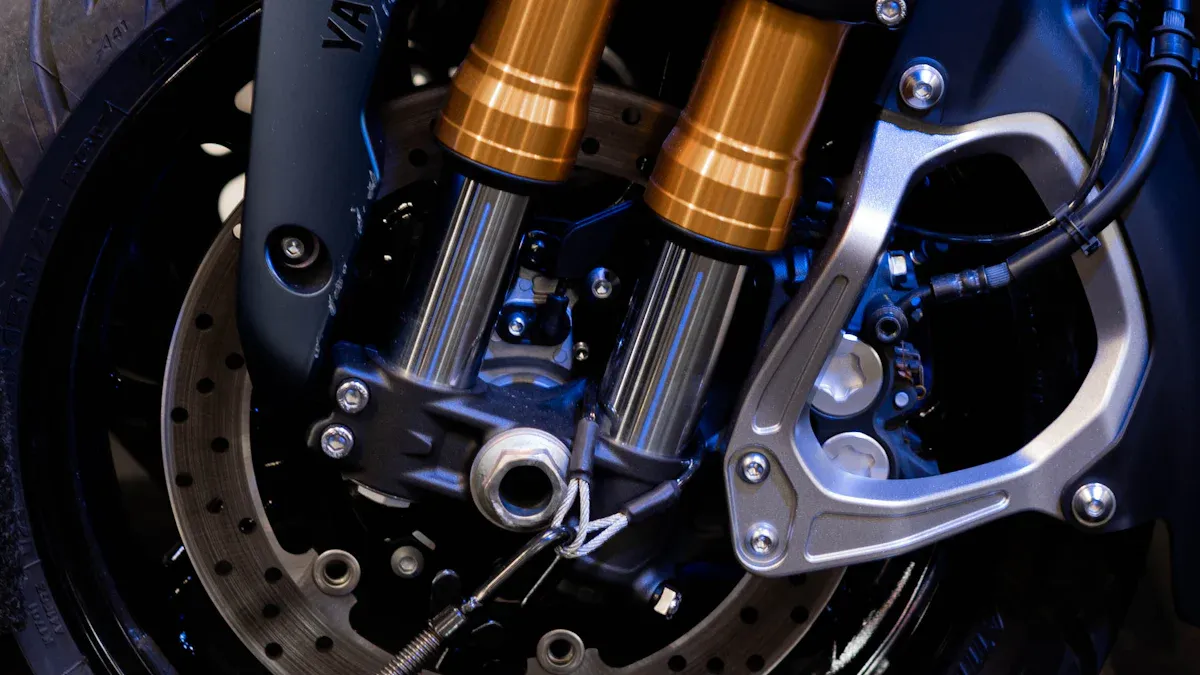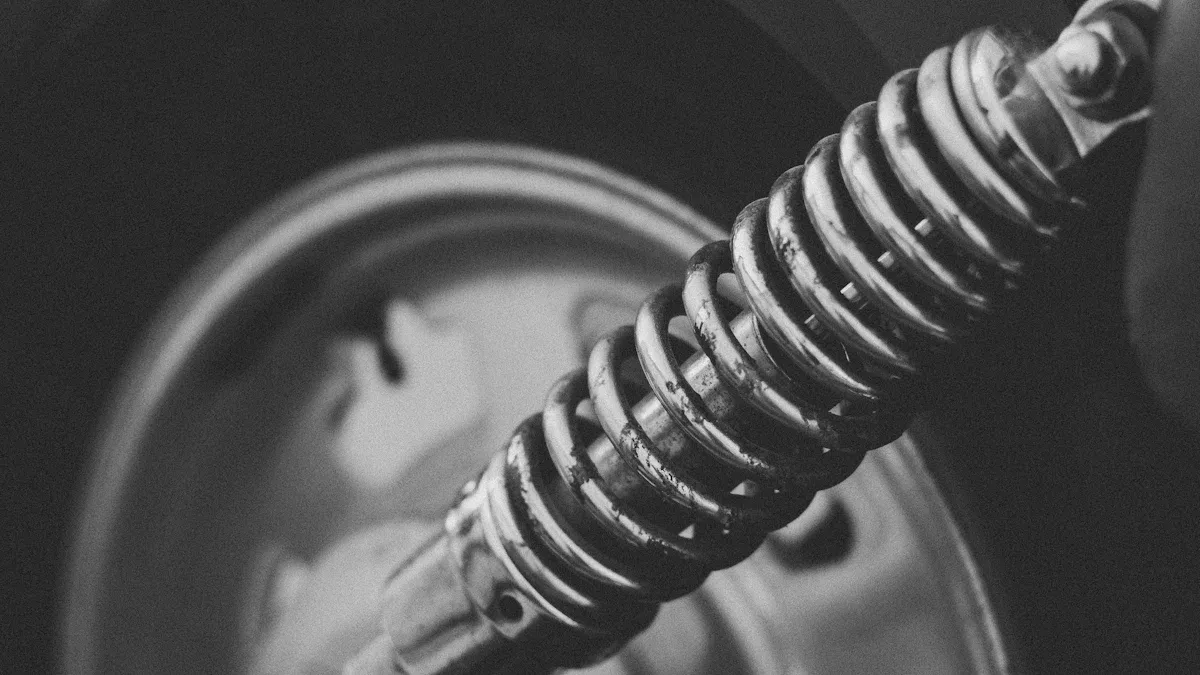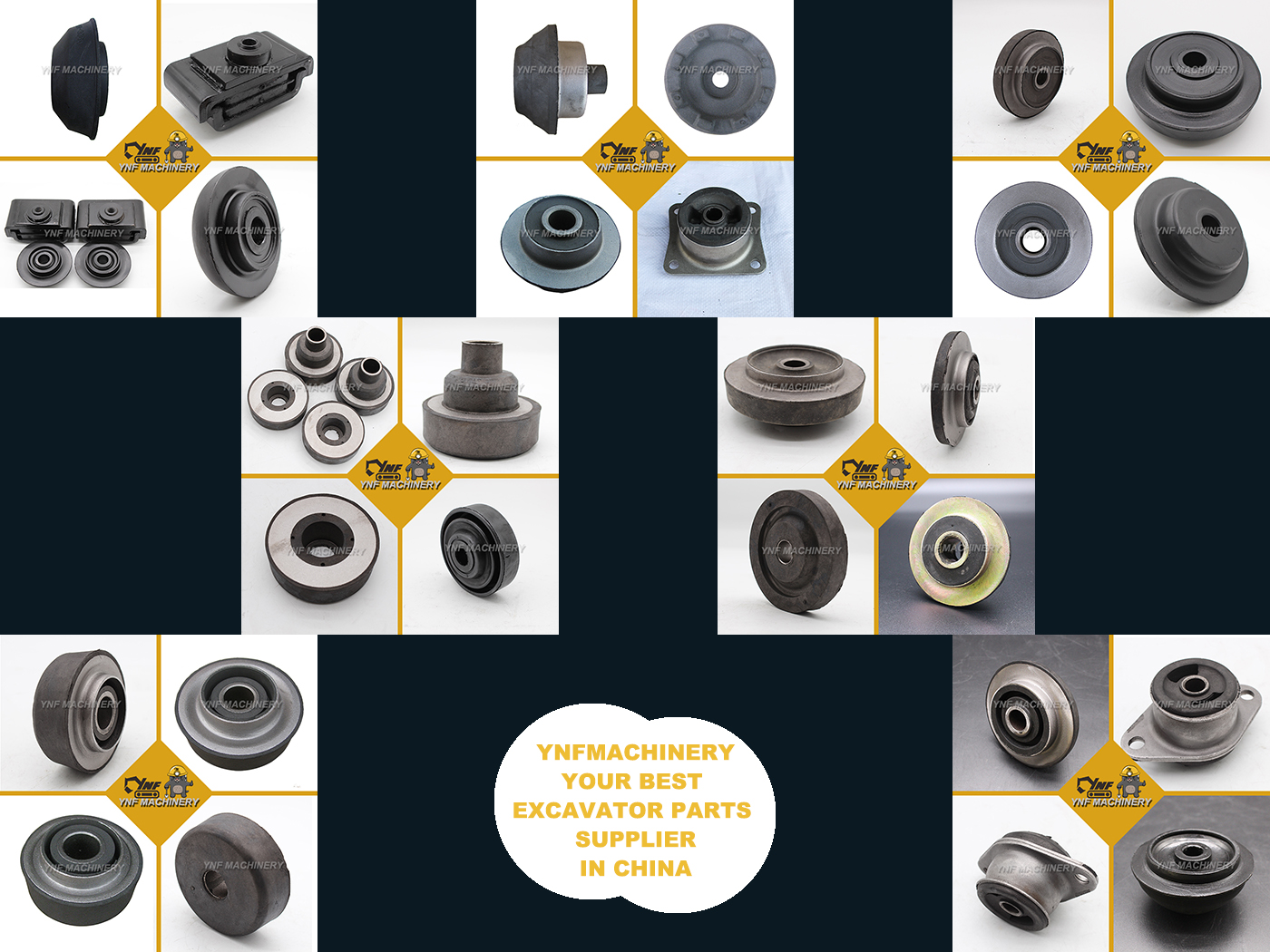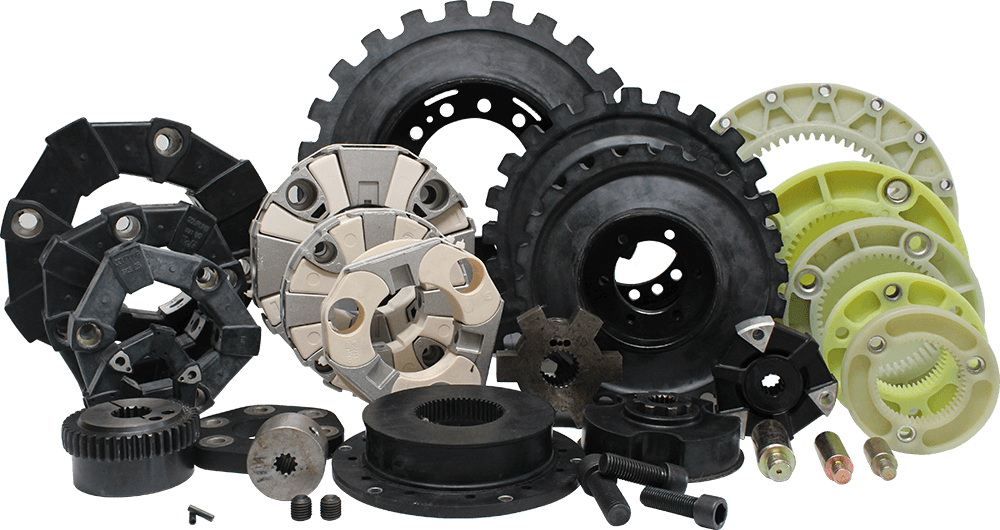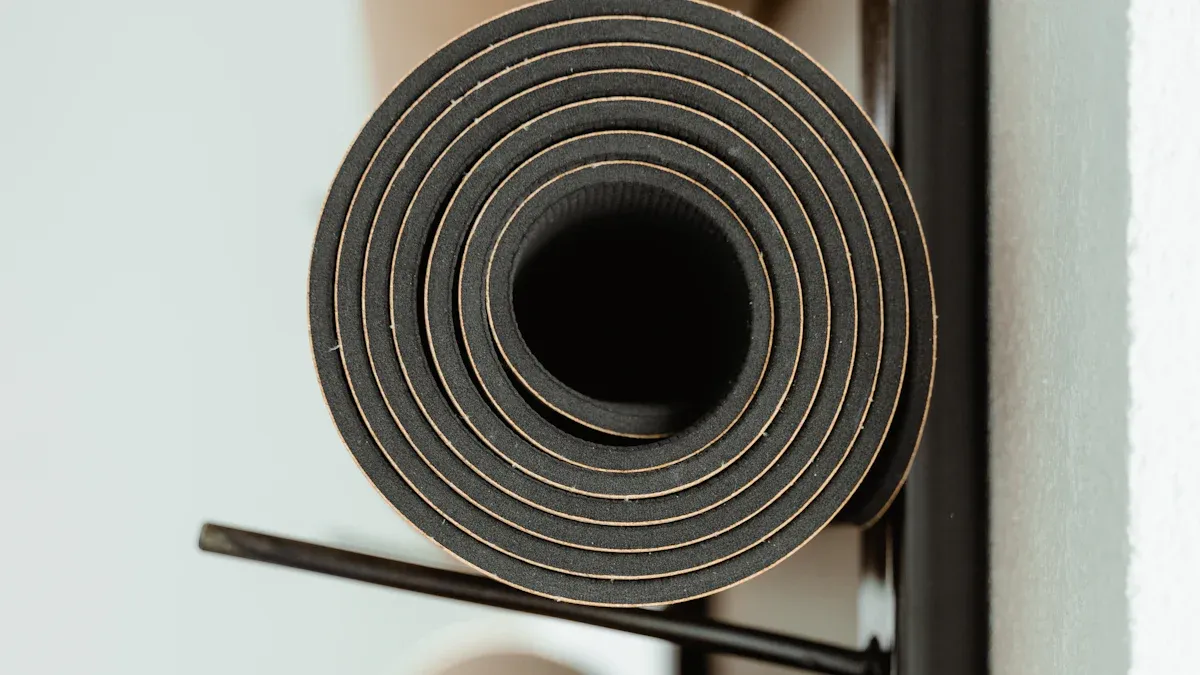
Heavy duty anti vibration rubber mounts help protect your equipment from bad vibrations. If you pick the wrong mount, you might hear more noise. Your equipment might not work as well. You could even have to pay for expensive repairs. Bad or wrong mounts let vibrations move through your machine. This can put stress on parts and make them break sooner. You can stop these problems by choosing the right mount for your equipment.
Key Takeaways
Find out how much your equipment weighs. Divide this weight by the number of mounts. This helps you choose the right size and load capacity.
Pick a mount with the right rubber type and hardness. Match it to your machine’s vibration speed and where it will be used. This gives the best protection.
Look at the mount’s static deflection. Make sure it can absorb vibration. It should not let your equipment move too much.
Put the mounts in the right way. Check them often to stop damage. This helps your equipment work well.
Do not make mistakes like ignoring vibration frequency. Do not overload the mounts. Do not skip maintenance. This helps your equipment last longer.
Equipment Needs
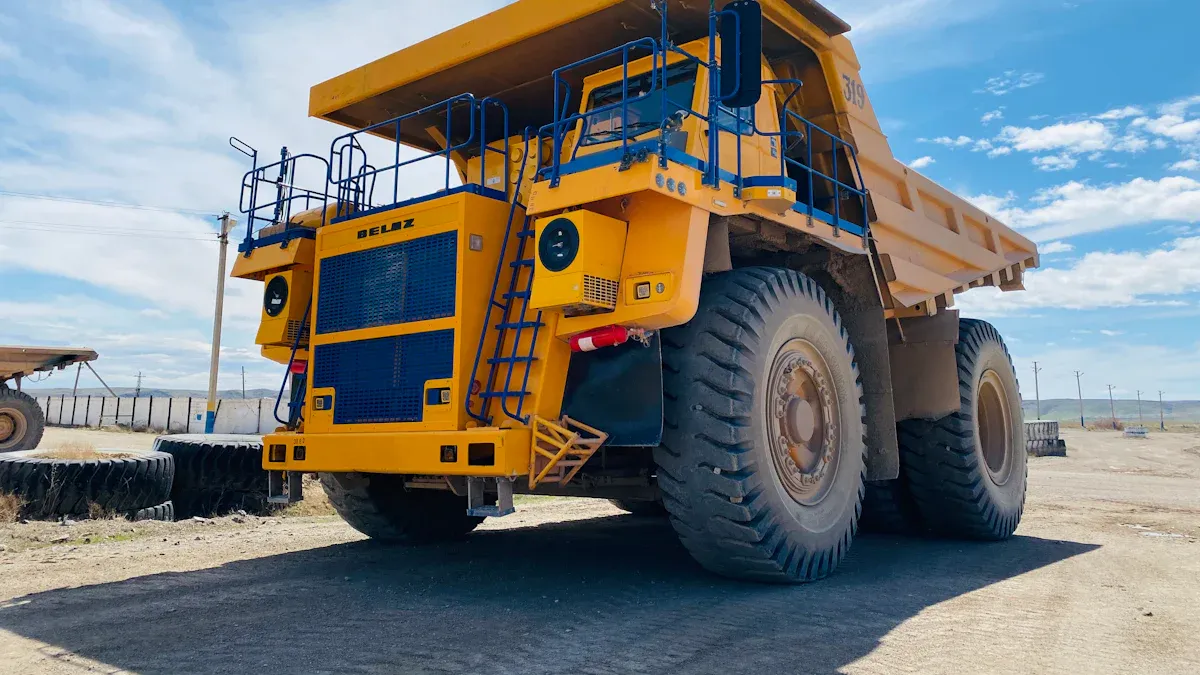
Weight and Load
You must know how much your equipment weighs before you pick a mount. Look for the weight in the manual or on the nameplate. Divide the total weight by the number of mounts you will use. This way, you can see how much weight each mount will hold.
Make sure each anti-vibration mount can hold its part of the weight.
Thicker mounts can take in more shock and stop more vibration.
Heavy machines might need bigger or extra mounts to share the weight.
Think about where the center of gravity is on your equipment. Put the mounts the same distance from the center of gravity. This helps keep the equipment steady. Each mount will hold the right amount of weight. If you put the mounts at the same height as the center of gravity, the equipment will not move too much. For moving machines, use mounts that can handle lots of shaking.
Tip: Figure out static deflection. This means how much the mount squishes under the weight. It helps you choose the right size and type for your needs.
Vibration Frequency
All machines make vibrations at different speeds, called frequencies. The right anti-vibration mount depends on these speeds. Rubber mounts work by soaking up and spreading out the vibration energy. How well the mount works changes with the vibration speed, how big the vibration is, and the weight. Always check your machine’s vibration speed before you pick a mount. This helps you get the best protection and keeps your machine safe.
Environment
Where you use your equipment is very important. If you use machines outside, pick anti-vibration mounts that can handle weather. In places with chemicals, use mounts that do not get ruined by them. Hot or cold weather and chemicals can change how long the mount lasts and how well it works. The rubber must stay strong and keep stopping vibrations, even in hard places. The shape and design of the mount also help it last and keep working over time.
Mount Types and Materials
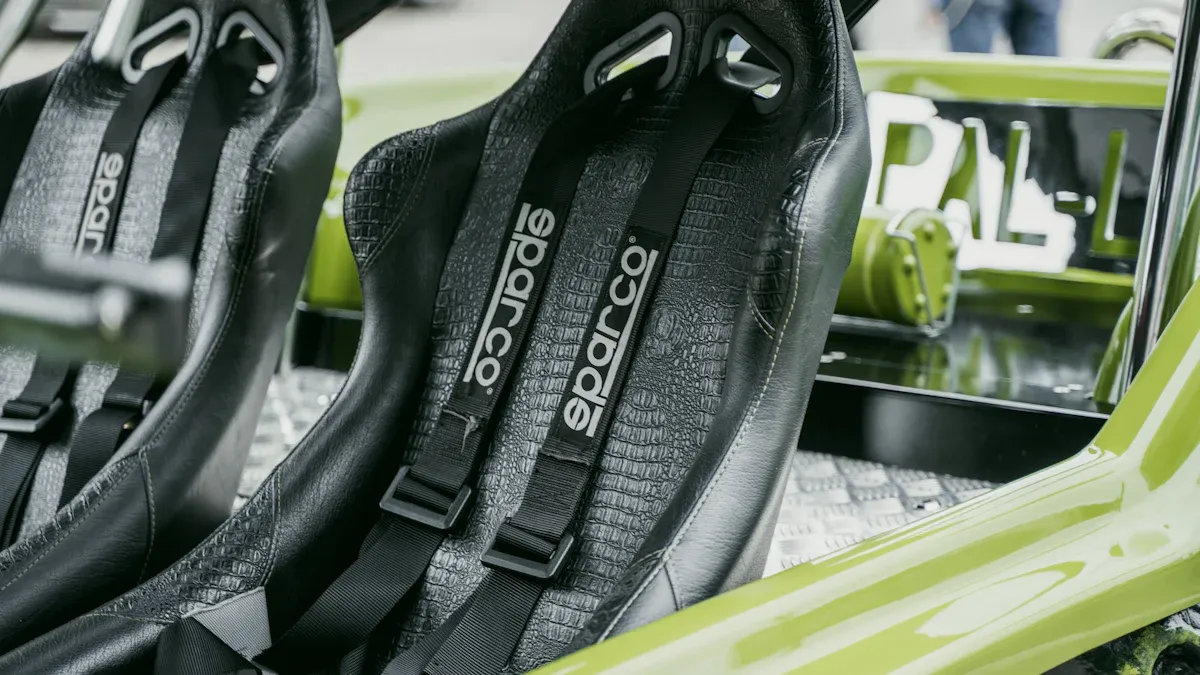
Mount Types
There are different anti-vibration mounts you can pick for your equipment. Each one is best for certain machines or jobs. Here are some heavy duty anti vibration rubber mounts you might use:
Heavy Duty Vibration Dampers: These are good for engines, motors, marine equipment, and big machines.
Spring Isolators and Restrainers: These are used for heavy loads and places where earthquakes can happen.
Load Bearing Pads (AASHTO grade): These pads hold very heavy things. You see them in building sites and with big machines.
Specialized Vibration Pads:
SRMP Steel/Rubber Pads: These have steel inside to spread weight. They are used for chillers, pumps, and boilers.
VP Waffle Design Pads: These pads let the rubber stretch out. They work for lathes, drills, and milling machines.
CRMP Cork/Neoprene Pads: These pads grip well and do not need bolts. They are used for light vibration.
EVA Foam Pads: These pads are good for small machines like AC units and speakers. They can handle weather and are good for the environment.
Tip: Choose the mount type that fits your machine’s size, weight, and vibration needs. This helps you get the best protection from vibration.
Rubber Properties
The rubber in anti-vibration mounts is very important. Different rubbers absorb vibration and last for different times. You need to pick the right rubber for your machine and where you use it. Here is a table to help you compare:
Rubber Type | Vibration Damping | Oil Resistance | Weather Resistance | Temperature Range | Durability |
|---|---|---|---|---|---|
Natural Rubber | High | Low | Medium | – Good | High |
Neoprene | Medium | High | Medium | – Good | High |
Nitrile | Medium | Very High | Low | – Fair | High |
Silicone | Medium | Low | High | – Very High | Medium |
EPDM | Medium | Low | Very High | – Good | High |
Pick a rubber that works for your job. If you need oil resistance, use neoprene or nitrile. If you need weather resistance, use EPDM or silicone.
Durometer Hardness
Durometer hardness tells you if the rubber is soft or hard. Soft rubber is better for low-frequency vibrations. Hard rubber is better for high-frequency vibrations. You need to match the durometer to your machine’s vibration and weight. Most heavy duty anti vibration rubber mounts use a hardness between 40 and 60 Shore A. This range gives good vibration control and lasts a long time. Some mounts, like those for HVAC systems or generators, use harder rubber, like TPE Shore 75 A, for very heavy loads.
Note: Always check the durometer rating before you buy an anti-vibration mount. The right hardness helps your equipment last longer and work better.
Selection Criteria
Load Capacity
You need to match the load capacity of each anti-vibration mount to your equipment. Start by finding the total weight of your machine. Divide this weight by the number of mounts you plan to use. Each mount must support its share of the load. If you use the wrong size, your equipment may not stay stable. Heavy duty anti-vibration mounts can handle a wide range of weights. Some mounts, like the SML/SMLS series, support from 5,000 to 45,000 pounds. Others, such as the VTM/VTMS, can hold up to 15,000 pounds. Smaller mounts, like the FMD/LF, work for lighter loads up to 1,200 pounds.
Mount Series | Load Capacity Range (lbs) | Notes |
|---|---|---|
SML/SMLS | 5,000 to 45,000 | For large crushers, mining, offshore machines |
VTM/VTMS | Up to 15,000 | For heavy pumps, chillers, engines |
VSCM/CMSS | 50 to 15,000 | Used in marine and industrial settings |
FMD/LF | 50 to 1,200 | For HVAC and light equipment |
You can also see the load capacity ranges in this chart:
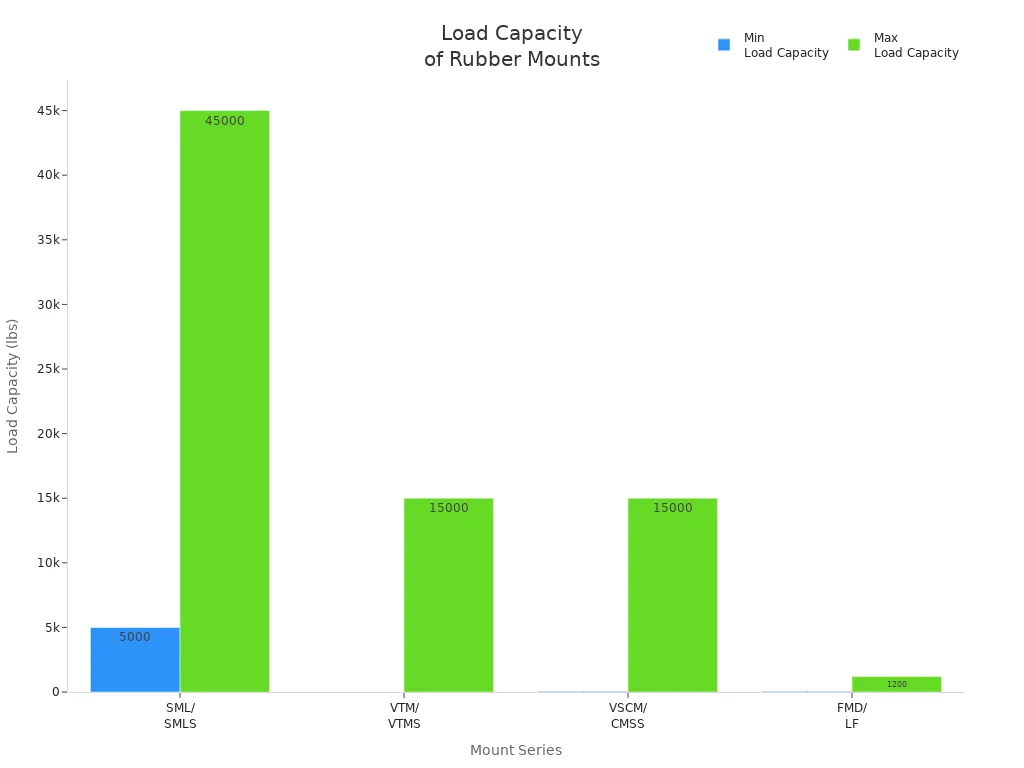
Tip: Never overload an anti-vibration mount. Overloading can cause the mount to fail or lose its vibration control.
Vibration Isolation
Vibration isolation is the main job of an anti-vibration mount. You want to stop as much vibration as possible from reaching your equipment or the floor. To do this, you need to know the vibration frequency of your machine. You also need to check the static deflection, which is how much the mount compresses under load. The right static deflection helps you get the best vibration isolation.
Follow these steps to choose the right anti-vibration mount for vibration isolation:
Find your machine’s weight and the number of mounts.
Measure the operating speed (RPM) of your equipment.
Decide how much vibration you want to block (isolation percentage).
Use a chart to match your RPM and isolation goal to the needed static deflection.
Pick a mount that gives this deflection under your load.
A mount with the right static deflection will soak up more vibration. If you pick a mount that is too stiff, it will not absorb enough vibration. If it is too soft, your equipment may move too much.
Note: The shape and size of the mount also affect vibration isolation. Conical mounts absorb impacts more gently than flat ones. Softer rubber dampens vibration better but may not hold as much weight.
Durability
Durability matters when you use anti-vibration mounts in tough places. You want mounts that last a long time, even with heavy use. The best mounts use strong rubber or elastomers and sometimes have metal parts for extra strength. Materials like neoprene and silicone resist oil, heat, and weather. These materials help the mount keep working, even in harsh environments.
Material | Key Properties | Advantages | Disadvantages |
|---|---|---|---|
Rubber | Flexible, absorbs energy | Durable, cost-effective | Can degrade in UV/extreme heat |
Neoprene | Oil, heat, aging resistant | Great for harsh use | Less flexible |
Silicone | High-temp, flexible | Handles heat, aging | More expensive |
Elastomers | Elastic, tough | Very durable | Cost varies |
Mounts with advanced rubber compounds can handle high deflection without breaking down. This means less noise, longer equipment life, and fewer repairs.
Tip: Always check the mount’s material before you buy. Pick one that matches your environment and use.
Installation
Proper installation helps your anti-vibration mount work its best. You need to make sure the mount fits your equipment’s mounting points. Check the size, shape, and bolt holes. Align the mounts so they share the load evenly. If you install them wrong, you may get more vibration or damage your machine.
Use the right tools and follow the manufacturer’s instructions.
Inspect mounts often for cracks or wear.
Replace worn mounts to keep your equipment safe.
Choose mounts that fit your equipment and your workspace.
Note: The right installation keeps your anti-vibration mounts working longer and helps your equipment run smoothly.
Choosing Heavy Duty Anti Vibration Rubber Mounts
Selecting the right heavy duty anti vibration rubber mounts for your equipment takes careful planning. You need to follow a step-by-step process to make sure your equipment stays safe and works well. Here is how to select an anti-vibration mount that fits your needs.
Gather Data
Start by collecting all the important information about your equipment. This helps you choose the best anti-vibration mount for your machine.
Find out the total weight of your equipment.
Check how the weight spreads across the mounting points.
Measure the machine’s RPM (revolutions per minute) to know the vibration speed.
Calculate the static deflection. This tells you how much the mount will compress under the equipment’s weight.
Decide on the type and size of mount you need based on your data.
Think about the environment. Look at temperature, chemicals, and weather. Pick materials like nitrile rubber or thermoplastic elastomer if you need extra protection.
Tip: Write down all your measurements and notes. This makes it easier to compare different mounts later.
Match Specs
Now, match your equipment’s needs to the technical details of available heavy duty anti vibration rubber mounts.
Use your equipment’s weight to pick the right size and number of mounts.
Divide the weight by the number of mounts to see how much each one must hold.
Adjust for uneven loads by choosing mounts with different hardness if needed.
Check the static deflection for each mount. The right amount of compression gives you the best vibration isolation.
Pick the mount type that fits your equipment’s job. Some mounts work better for machines that move, while others are best for machines that stay still.
Think about what you want most—less noise, more comfort, or better efficiency. Choose a mount that helps you reach your goal.
Note: Always check the mounting points and the space around your equipment. Make sure the mounts fit and can be installed easily.
Manufacturer Guidelines
Manufacturers give helpful advice for picking the right anti-vibration mount. They list the features, uses, and materials for each mount type. Here is a quick guide:
Mount Type | Key Features and Uses | Material Examples |
|---|---|---|
Heavy-duty vibration mounts | Good floor grip, screw-on, for heavy machinery | TPE Shore 75 A |
Vibration-mount standoffs | Cushion between parts, different thread styles | Neoprene rubber Shore 40 |
Vibration-mount grommets | Flexible, for stationary machines needing damping | Neoprene rubber Shore 60 A |
Vibration grommet screws | Used with grommets, strong metal | Zinc-plated carbon steel |
Material | Properties and Suitability |
|---|---|
Natural Rubber | Abrasion resistant, low temp resistant, poor petroleum resistance |
Nitrile | Great chemical resistance, good water resistance, works from -40°C to 100°C, good tear resistance |
Manufacturers also suggest these steps:
Find the total weight and number of mounts needed.
Use more mounts for heavier equipment to lower vibration.
Calculate the load each mount will carry.
Check the center of gravity for even load sharing.
Find the operating frequency and lowest speed of your machine.
Measure static deflection for the best vibration control.
Pick mounts with the right load rating and spring rate.
Think about your application and how much vibration you want to stop.
Make sure all connections, like pipes or ducts, can move a little to avoid stress.
If you want reliable heavy duty anti vibration rubber mounts, consider YNF Rubber. They offer many types and can help you match the right mount to your equipment.
Cost vs. Performance
You need to balance cost and performance when you choose anti-vibration mounts. Cheaper mounts may not last as long or work as well. High-quality mounts cost more, but they protect your equipment better and last longer.
Look at the total cost, not just the price of the mount. Think about how much you might save on repairs and downtime.
Compare the features of each mount. Some offer better vibration isolation, while others last longer in tough environments.
Ask the manufacturer or supplier for advice if you are not sure which mount to pick.
Remember: The best heavy duty anti vibration rubber mounts give you good value by keeping your equipment safe and running smoothly.
Common Mistakes
Picking heavy duty anti vibration rubber mounts is not always easy. People often make mistakes that can hurt how equipment works and how safe it is. You can stop these problems if you know what the most common mistakes are.
Load Rating Errors
You have to check the load rating for every mount. If a mount cannot hold enough weight, your equipment might tip or break. Some people forget to split the total weight by the number of mounts. This mistake makes the weight uneven. You also need to know where the center of gravity is. If you do not check this, some mounts might get too much weight.
Always find out how much your equipment weighs and how many mounts you need. This helps each mount hold the right amount and stops too much stress.
Common load rating mistakes include:
Picking mounts that cannot hold enough weight
Not using the right number of mounts
Forgetting about things like heat or chemicals
Installing mounts the wrong way, which can break them
Ignoring Vibration
You need to pick mounts that match your machine’s vibration speed. If you do not check this, you might get resonance. Resonance happens when the mount’s own vibration matches the machine’s. This can make shaking worse, not better. Rubber can change as it gets older or hotter, which can let more vibration through. If you use the wrong mount on sensitive machines, like clocks, they may not work right.
Risks of ignoring vibration:
More shaking because of resonance
Sensitive machines lose accuracy
More noise or bending in the equipment
Bad vibration control or even more vibration
Tip: Always check how fast your machine vibrates and pick mounts with the right damping and stiffness.
Maintenance Oversights
You need to check your mounts often. If you do not, mounts will not last as long and your machine may not work well. High heat can make rubber crack. Leaks, like oil or diesel, can ruin the elastomer. Checking your mounts often helps you find cracks or damage early.
Maintenance mistakes to avoid:
Not checking for wear
Not looking for cracks or damage
Not changing mounts that are worn out
Letting leaks make the mounts dirty
Taking care of your mounts helps them last longer and keeps your equipment safe.
Good care means fewer breakdowns, saves money, and helps your equipment last longer.
If you want good mounts and help from experts, you can try YNF Rubber. They have many kinds and can help you not make these mistakes.
To pick the right heavy duty anti vibration rubber mount, first learn your equipment’s weight. You also need to know how fast it vibrates and where you will use it. Make a checklist to help you look for worn mounts and check if the material is right. Always follow what the manufacturer says. Clean your mounts and look for damage often. This keeps your equipment safe and quiet.
If you want help or good products, ask companies like YNF Rubber. Picking the right mount and checking it often helps your equipment last longer and work better.
FAQ
What is a heavy duty anti vibration rubber mount?
A heavy duty anti vibration rubber mount absorbs shocks and reduces vibration. You use it to protect machines and keep them stable. It helps your equipment last longer and work better.
How do I know which mount size to choose?
Check your equipment’s weight and divide it by the number of mounts you need. Pick a mount that can hold its share of the load. Always match the mount size to your machine’s needs.
Can I use any rubber material for my mount?
No, you must choose the right rubber for your environment. Neoprene resists oil. EPDM handles weather. Nitrile works well with chemicals. Pick the material that fits your job best.
How often should I check my mounts?
Inspect your mounts every few months. Look for cracks, wear, or damage. Replace any mount that looks worn out. Regular checks help your equipment stay safe and quiet.
Where can I buy reliable anti vibration mounts?
You can buy reliable mounts from trusted suppliers. YNF Rubber offers many types of heavy duty anti vibration rubber mounts. They can help you find the right product for your equipment.


